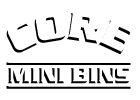Toronto Begins Efforts to keep Waste out of Recycling Bins

Everything from dead animals to black plastic has been ending up in Toronto’s recycling bins, and it costs the city several million dollars each year to separate the waste from the reusable items. Recycle Right, Toronto’s new cleanup program, aims to minimize the problem.
Over the next six months, the city will have staff tag recycling bins that contain at least 25% waste material and leave them there next to a recycling pamphlet so homeowners get a refresher on what can and can’t be recycled. Two weeks later, the mini bins will be rechecked to see if the homeowners got the message. If this program doesn’t work, fines could be given to those who fail to follow recycling guidelines.
The contents of every blue bin is dumped into a waste collection truck, which transfers its materials to a filtering location that puts all recyclable items on a tractor trailer to be driven to Canada Fibers Limited. Among the 1,000 tonnes those trailers carry, workers have found stuffed animals, used car parts, old toys, and much more.
Canada Fibers puts its received recycling through a pre-sorting process in which the large pile is separated into smaller, more manageable piles that go into the gargantuan Machine X, a piece of machinery equipped with many conveyor belts, steel bars, stairways, and platforms that allow employees to move around more easily and work more efficiently. This is the machine that finally separates garbage from recyclable material.
With a combination of magnets, lasers, hands, eyes, and sifters, the recyclable items are isolated and divided even further into different types of paper, plastic, metal, and glass after this junk removal process. The garbage found during the sorting process is sent to a compressor or a large garbage bin, and over the course of a year, 45,000 tonnes of garbage finds its way to the recycling sorter.
To make sorting easier, bigger pieces of plastic are taken out so workers can better see what the other materials are as they’re carried along by the conveyor belts. Because the laser used to sort plastic can’t tell different types of plastics apart, black plastic isn’t recyclable while green, blue, and transparent plastics are. Further down the line, the machine’s magnet attracts metal and draws it out of the waste pile.
Every so often, the machine becomes jammed with a jagged piece of material, which is typically garbage that doesn’t belong there. Despite this frequent inconvenience, it still manages to sort out everything without issue. Each group of recyclable material is pressed into a large cube and sold for use in new bottles, cans, containers, and other packaging.
The garbage that was previously separated always finds its way to one of the nearby landfills. Sorting staff know how crucial it is to weed out the garbage as early on in the process as they can so it doesn’t get mixed into the recycling cubes. But it isn’t their duty alone - Toronto’s residents must recycle properly to save city staff great amounts of time and money.


